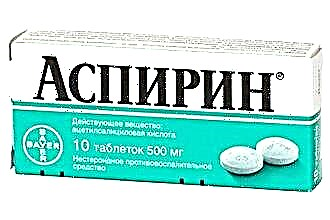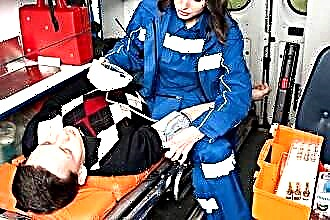In order to provide first aid, if a child has an ear ache, it is necessary to navigate the cause of his condition. Each disease requires its own methods of treatment, its own approach. Direct influence on the cause of the disease helps to improve the situation as soon as possible.

The reasons for the development of pain in the ear are the following conditions:
- injury;
- lymphadenitis;
- inflammation of the salivary gland;
- neurological pathology;
- tumor process.
The most common cause of ear pain is the development of an inflammatory process in it. In this case, parents can face both otitis externa and otitis media. Symptoms, as well as the necessary help in this case, will have some differences.
The need to consult an ENT doctor
The most important measure necessary for the provision of qualified and correct assistance to such a child is the timely consultation of an ENT doctor. Depending on the cause of the pain in the ear, treatment tactics may include the use of antibiotics, antiseptics, neurological drugs, and symptomatic treatment. In some cases, it may be sufficient only to ensure the rest of the damaged organ. Only a specialist can clarify the diagnosis and prescribe the correct treatment. This is especially true of those cases when otitis media became the cause of the development of pain syndrome.
Treatment tactics for otitis media
We can talk about the development of otitis media if additional symptoms (apart from pain in the ear) are hearing loss, tinnitus, malaise and fever.
This pathology is also supported by the fact that the disease developed after 1-2 days, or several hours after the appearance of catarrhal phenomena in the child, first of all, a runny nose, nasal congestion. In the absence of enlarged salivary glands, this condition indicates the development of inflammation of the middle ear in the child.
In this case, the main symptom is pain in the child's ear.
First aid for otitis media consists in the use of vasoconstrictor nasal drops.
This is logical, since the cause of the development of otitis media is edema and impaired patency of the auditory tube. The use of vasoconstrictor drugs helps to improve its patency, which means it helps to normalize the situation.
Anesthetic drugs
If the ear hurts, first aid to the child consists in the use of systemic drugs with an analgesic effect.
Prior to examination by an otolaryngologist, local remedies cannot be used, therefore, in this case, paracetamol is used.
It comes in the form of tablets, capsules, syrup, suppositories. Depending on each specific case, one or another form of release can be used. Another drug recommended for use from a very young age is ibuprofen. Both drugs also have anti-inflammatory and antipyretic effects, which is also important in the case of otitis media.
Other drugs can only be used after consulting a specialist and performing an otoscopy. This applies to both ear drops containing ethyl alcohol, non-steroidal anti-inflammatory drugs, and antibiotics in any form of release. Untimely use of these drugs can cause severe irreversible consequences.
If, after consulting an otolaryngologist, the diagnosis of catarrhal otitis media is clarified, then an effective method to help relieve pain is the use of ear drops, which include antiseptics, analgesics, corticosteroids or local anesthetics. Complex preparations containing several components can also be used. The most popular means used for this purpose are Otinum, Otipax, alcoholic boric acid solution, Sofradex.
The same drugs can be used at the pre-perforative stage of acute purulent otitis media. They have a pronounced anti-inflammatory and analgesic effect.
Ear drops are always used warmed up, their temperature should be 35-40 degrees.

In the presence of a perforated eardrum, these drugs can only be taken with the permission of a doctor, since some of their components have a toxic effect on the bones of the middle ear and the auditory nerve.
First aid, if a child has ear pain, is to immobilize the affected ear. This is necessary because the slightest touch on the inflamed ear, or even the movement of air, causes increased pain in the affected organ. This observation is based on the clarification of the diagnosis by pressing on the tragus. Forcing air movements increase its pressure in the external auditory canal and increase pain. To limit this effect, one resorts to immobilizing the ear. To do this, a cotton turunda can be inserted into the external auditory canal or a cap that fixes the auricle can be put on.
In adult patients, thermal procedures and vodka compresses are widely used to relieve pain at the first signs of the disease. The use of it is due to the fact that heat exposure is capable of masking pain sensations. As a treatment for otitis media, these measures can only be used in children over 5 years old. At an earlier age, carrying them out is dangerous.
Factors influencing the choice of treatment tactics
If a child has an ear ache, what to do, and what first aid can be provided depends on
- the reasons for the development of this syndrome;
- clinical manifestations of the disease (external or otitis media, catarrhal or purulent inflammation);
- the integrity of the tympanic membrane.
For the correct appointment of treatment, the general condition of the patient, the degree of intoxication, and temperature indicators are also important. Catarrhal otitis media does not need antibiotic therapy from the very first hours of the disease. In most cases, recovery occurs after the use of nasal vasoconstrictor and ear drops. Antibiotics are not considered first aid in this case. However, if after two days the patient's condition remains without improvement, then antibiotics become an integral part of complex treatment.
 The presence of purulent otitis media implies the use of antibiotics from the first hours of the disease.
The presence of purulent otitis media implies the use of antibiotics from the first hours of the disease.
It is their timely and correct appointment that is the prevention of the development of severe complications of otitis media. They can be used both in the form of local treatment and in tablet forms. In severe cases, it is possible to prescribe local and systemic drugs together.
Ear pain in a child and first aid in this condition is something that almost all parents have to deal with. Up to the age of three, 90% of children suffer from acute otitis media. Knowledge of the basics of treatment tactics is the key to the fastest recovery and prevention of complications.




